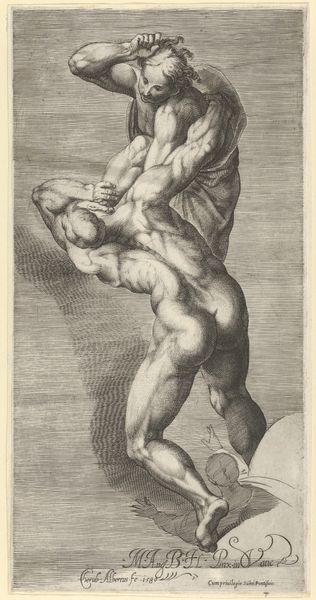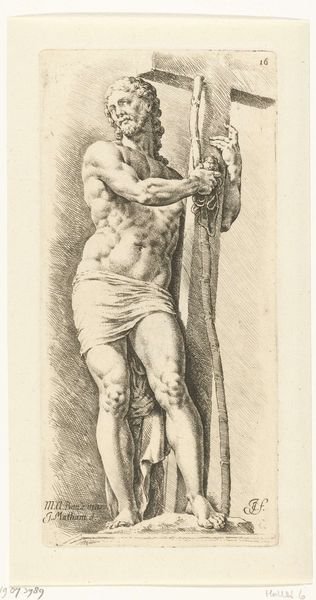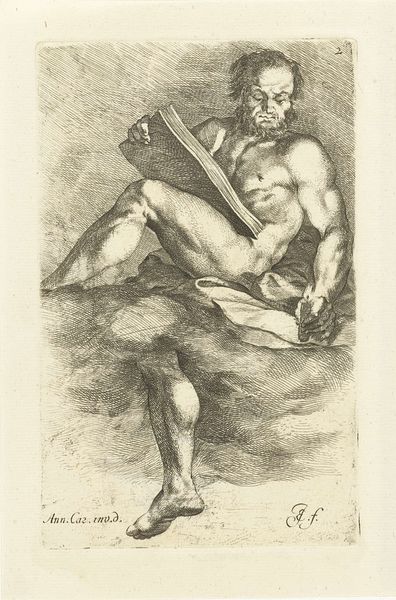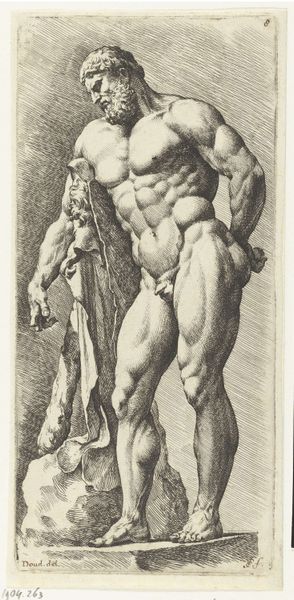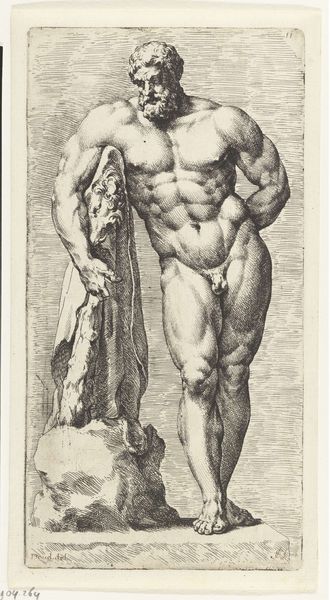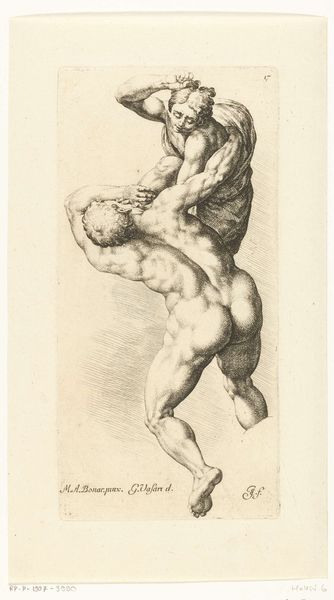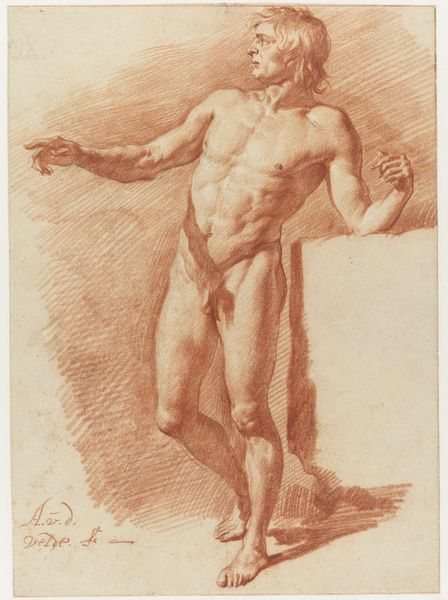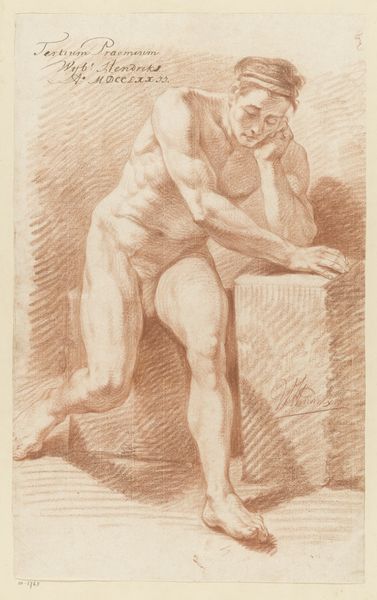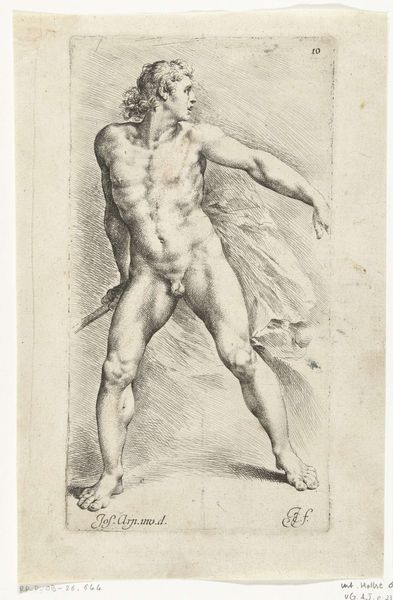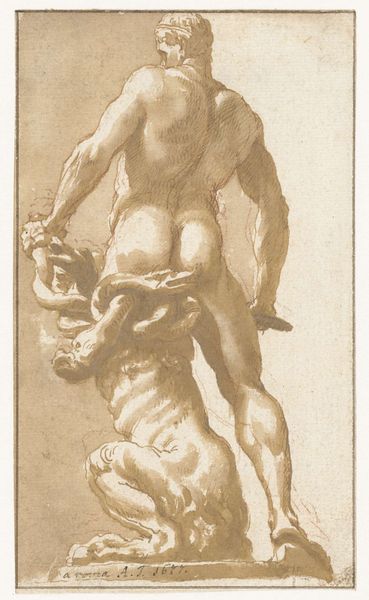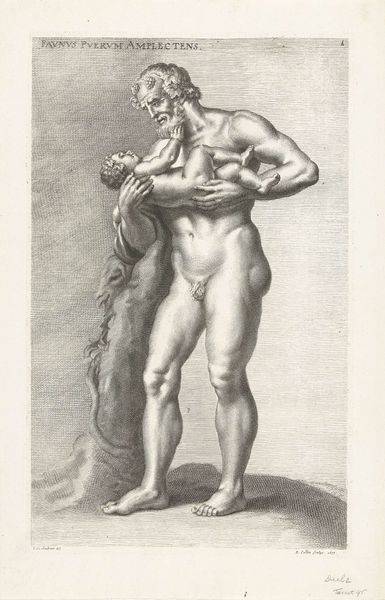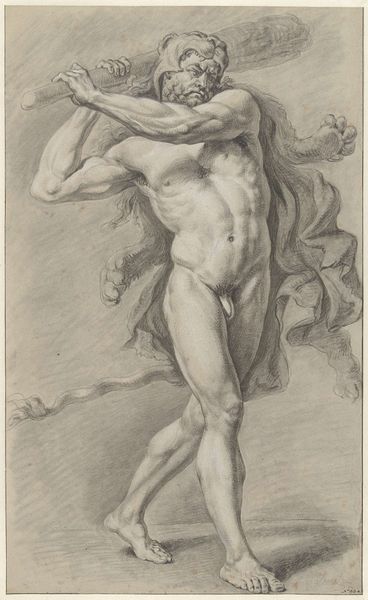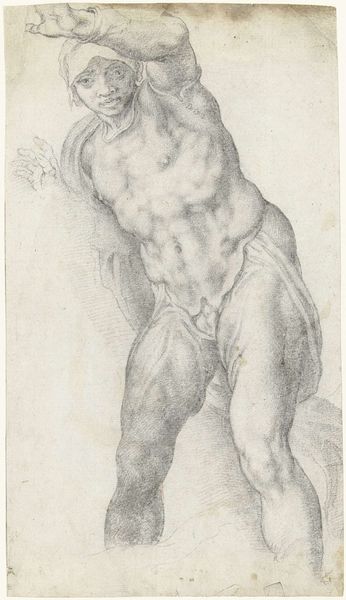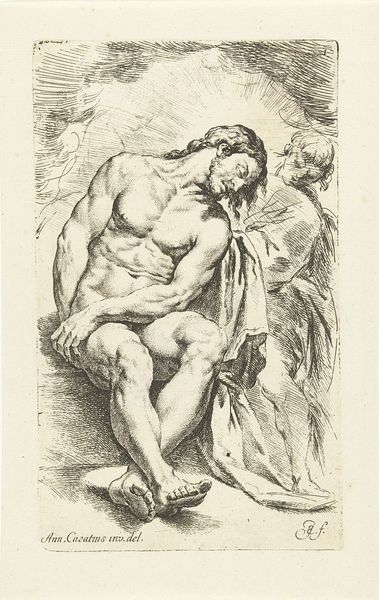
drawing, ink
#
drawing
#
baroque
#
figuration
#
ink
#
nude
#
erotic-art
Dimensions: height 205 mm, width 105 mm
Copyright: Rijks Museum: Open Domain
This is Jan de Bisschop's "Zittende Pan met fluit," a print made sometime in the mid-17th century. It's created through etching, a printmaking process involving acid and metal. The quality of the line is what gives etching its distinctive character. De Bisschop would have coated a metal plate with wax, then drawn his image with a sharp needle, exposing the metal underneath. Immersing the plate in acid would bite away at these exposed lines, creating grooves. Ink is then pressed into these grooves, and the plate is pressed onto paper. Notice the velvety blacks, made possible by allowing the acid to deeply erode the metal. This was a relatively new technology in the 17th century, but the image revives ancient mythology. The artist expertly uses the processes available to him, to capture the textures of Pan’s human and animal features. By understanding the material and making of this print, we can fully appreciate the image’s delicate balance between modernity and the classical world. It bridges the space between craft and fine art.
Comments
No comments
Be the first to comment and join the conversation on the ultimate creative platform.
